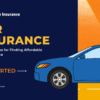Creating a comprehensive homeowner insurance policy involves more than just checking a few boxes. It requires careful consideration of your property, assets, and potential risks. Here’s the ultimate checklist to guide you in securing the right coverage for your home:
- Dwelling Coverage: Ensure your policy provides adequate coverage to rebuild or repair your home in case of damage from perils like fire, windstorms, or vandalism. Take into account factors such as local construction costs and the size of your home.
- Other Structures Coverage: Don’t forget to include coverage for other structures on your property, such as a detached garage, shed, or fence. These structures are often included in standard policies but may have limited coverage that can be increased if needed.
- Personal Property Coverage: Inventory your belongings and ensure your policy provides sufficient coverage for personal property, including furniture, appliances, clothing, and electronics. Consider additional coverage for high-value items like jewelry or artwork.
- Liability Protection: Liability coverage protects you financially if someone is injured on your property or if you accidentally damage someone else’s property. Ensure your policy includes adequate liability limits to protect your assets in case of a lawsuit.
- Additional Living Expenses (ALE): ALE coverage reimburses you for additional living expenses if your home becomes uninhabitable due to a covered loss. This can include temporary housing, meals, and other essentials while your home is being repaired or rebuilt.
- Loss of Use Coverage: Similar to ALE, loss of use coverage compensates you for the loss of rental income if you’re unable to rent out part of your property due to a covered loss. Landlords should ensure they have this coverage if they rely on rental income.
- Replacement Cost vs. Actual Cash Value: Decide whether you want your personal property and dwelling coverage to be based on replacement cost (the cost to replace or repair without deducting depreciation) or actual cash value (replacement cost minus depreciation). Replacement cost coverage typically provides better protection but may come with higher premiums.
- Flood Insurance: Standard homeowner policies typically don’t cover flood damage. If you live in a flood-prone area, consider purchasing a separate flood insurance policy through the National Flood Insurance Program (NFIP) or a private insurer.
- Earthquake Insurance: Like flood insurance, earthquake coverage is usually not included in standard policies. If you live in an earthquake-prone region, consider adding earthquake insurance to protect your home and belongings from seismic events.
- Review and Update Regularly: Review your homeowner insurance policy annually and update it as needed to reflect changes in your home, property value, and coverage needs. Notify your insurer of any significant renovations, additions, or acquisitions that may affect your coverage.
By following this checklist and customizing your homeowner insurance policy to meet your specific needs and circumstances, you can ensure comprehensive protection for your home and belongings against a wide range of potential risks and hazards.
















